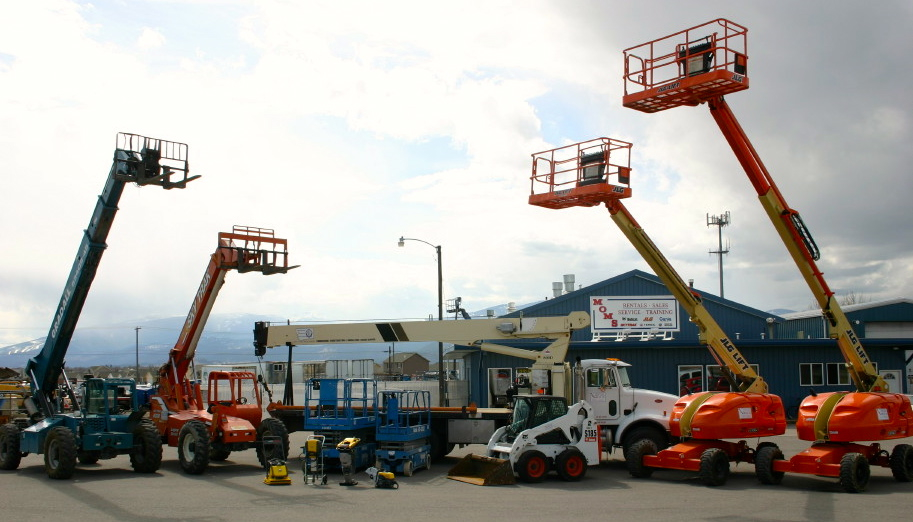Construction Equipment Rentals: Heavy Duty Equipment for Your Projects
Construction Equipment Rentals: Heavy Duty Equipment for Your Projects
Blog Article
Maximize Your Budget by Comprehending the Expenses Connected With Construction Tools Leasings
Comprehending the complete scope of expenses linked with construction tools leasings is crucial for maximizing your budget plan. What strategies can be employed to efficiently take care of these costs and guarantee an extra reliable rental experience?
Overview of Rental Prices
When thinking about construction devices rentals, understanding the linked costs is extremely important for efficient budgeting and task planning. Rental prices can vary significantly based upon several aspects, including tools type, period of rental, and place. The first rental charge commonly reflects the devices's market need and its associated functional capabilities, affecting the overall cost.
In enhancement to the base rental rate, secondary costs may emerge, such as transportation charges, gas additional charges, and maintenance charges. It is essential to represent these extra expenditures to accurately examine the overall price of renting devices. In addition, the rental duration can influence rates; longer leasings might certify for discounted rates, while short-term leasings could sustain higher daily fees.

Breakdown of Rental Rates
A comprehensive understanding of rental prices is essential for contractors and job supervisors aiming to maximize their spending plans. Rental prices for building and construction devices usually contain numerous elements, including base rates, time-based costs, and use costs.
Base prices are the core fees related to the rental of the tools, commonly established by the kind and size of the machinery. These prices can differ significantly, influenced by factors such as tools demand, availability, and local market patterns. Time-based costs, which might be daily, weekly, or monthly, serve to accommodate various job timelines and rental periods.
Furthermore, rental rates may consist of usage costs, which apply when equipment is made use of beyond a defined threshold, ensuring that the rental firm can account for damage. Seasonal demand fluctuations can likewise affect rental prices, with peak construction periods normally regulating higher costs.
Moreover, recognizing the rental company's plans concerning upkeep and insurance coverage can provide additional understanding right into the overall expense framework. By examining these parts, specialists can make informed decisions, ensuring the choice of rental tools aligns with both job needs and budget restraints.
Added Costs to Consider
Understanding the complexities of additional costs is crucial for specialists to handle their general service costs properly. Past the standard rental rates, various supplemental fees can significantly impact the complete expense of equipment leasing. These costs usually consist of distribution and pick-up costs, which can differ based upon range and logistics associated with moving the tools to and from the work website.
Additionally, some rental business might impose fuel surcharges if the tools is returned with less gas than when rented out. It is likewise vital to recognize prospective cleansing costs, particularly for customized tools that needs extensive upkeep after usage.

Extensively examining the rental contract and making clear these extra fees ahead of time can assist specialists make certain and prevent unexpected prices that budget plans continue to be intact throughout the task lifecycle.
Maintenance and Repair Expenses
Routine repair and maintenance expenses are usually neglected factors that can considerably influence the total expense of construction tools services. When renting tools, it is important to take into consideration not only the rental costs but likewise the potential expenses related to keeping the machinery in optimum operating condition.
Lots of rental companies consist of fundamental maintenance as component of the rental arrangement; nonetheless, much more unforeseen failures or extensive repair work can cause extra expenses. It's vital to assess the rental agreement carefully to comprehend what maintenance solutions are covered and what obligations drop on the occupant.
Furthermore, equipment that is not well-maintained can result in ineffectiveness on the work website, possibly enhancing and causing hold-ups task prices. To minimize these threats, it is suggested to perform regular assessments and keep open interaction with the rental copyright pertaining to any concerns that emerge throughout usage.
Insurance Policy and Obligation Expenses
Insurance policy and liability prices are essential parts that can dramatically influence the general expenditure of construction tools services (scissor lift rental). These costs ensure that both the rental firm and the client are safeguarded from possible economic losses developing from mishaps, damage, or burglary throughout the rental duration

Furthermore, clients must be aware of any kind of deductibles or exclusions in the insurance coverage policy, as these can impact possible out-of-pocket expenses. Comprehending the conditions of any type of insurance policy coverage is important to stay clear of unexpected expenses. Ultimately, budgeting for insurance policy and obligation expenditures can help guarantee a smoother rental experience and shield against financial dangers linked with construction jobs.
Verdict
In final thought, a comprehensive understanding of the expenses linked with building devices leasings is vital for effective spending plan monitoring. Inevitably, informed decision-making pertaining to tools leasings contributes to the general success of building and construction endeavors.
Rental costs can differ considerably based on a number of factors, including tools type, duration of service, and place (scissor lift rental). The rental duration can affect prices; longer rentals might qualify for affordable prices, while temporary services could sustain greater daily fees
By conducting complete research and involving with reputable rental dozer heavy equipment business, professionals can efficiently navigate the intricacies of rental pricing, ultimately maximizing their monetary resources.
Beyond the conventional rental rates, different auxiliary costs can considerably impact the complete expense of equipment rental. Rental business usually provide liability insurance that covers injuries to 3rd events or damage to home, while equipment damage insurance policy can cover the cost of repair services or replacement if the rented out tools is damaged.
Report this page